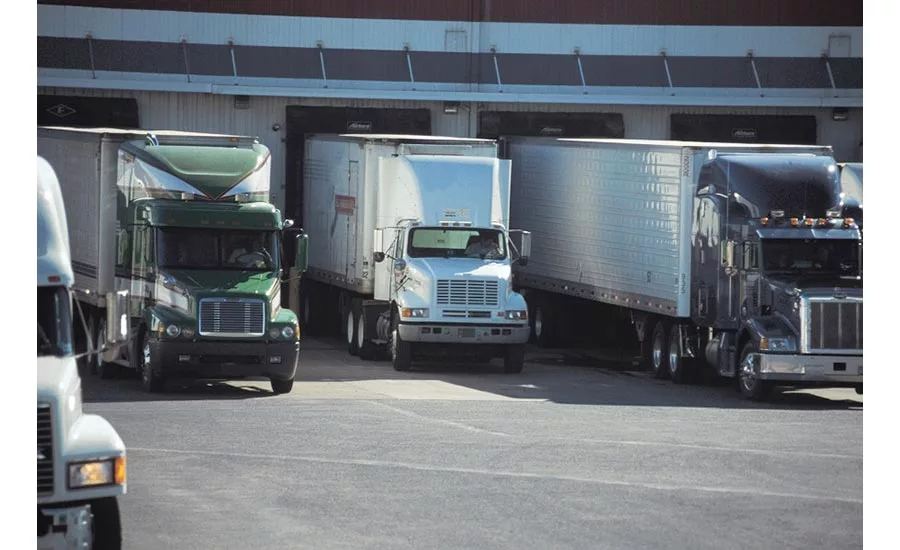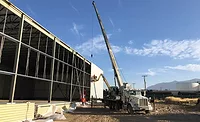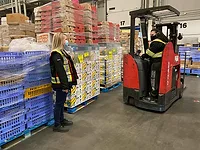How the Cold Food and Beverage Supply Chain is Performing During the COVID-19 Pandemic
Workplace safety initiatives, strategic reallocation of inventory, and online resources are keeping the cold chain moving, according to the GCCA.


Lowell Randel, VP, government and legal affairs at the Global Cold Chain Alliance (GCCA).

The COVID-19 pandemic has had a historic impact on business across multiple industries in a very short time, including the cold food and beverage supply chain. We spoke with Lowell Randel, VP, government and legal affairs at the Global Cold Chain Alliance (GCCA) for a snapshot of how the cold chain is adjusting to the new norm, and also to dispel certain myths surrounding the country’s food supply and ability to replenish inventory.
R&FF: How has COVID-19 affected the cold F&B supply chain—processing, storage, transportation, logistics and staffing? What are you hearing from your members?
Companies across the food supply chain are working around the clock to produce, transport, store and distribute food around the country. Our members are continuing to operate at a very high level, both receiving new product into their facilities and moving products out of facilities and into distribution to grocery stores and other outlets. The Department of Homeland Security’s designation of food supply as part of the critical infrastructure is very important to enable our member companies to continue operating and moving food around the country. This is particularly true for places that have instituted “shelter in place” policies, like California. It is vitally important that states and localities recognize workers in the food supply chain as essential and allow them to continue to operate.
R&FF: How has COVID-19 affected the supply of cold F&B from an end-user standpoint? Is there enough supply to keep stores stocked?
There is not a shortage of food in the country. Our member facilities are full, not empty, and they are continuing to receive new product from producers and manufacturers. The recent runs on grocery stores have certainly created some short-term disruptions, but this is not an indication that there is a lack of supply. All facets of the food industry are working together closely to ensure that the food supply chain remains strong.
R&FF: What are the biggest misconceptions about COVID-19 and the cold F&B supply chain (and by extension, the entire F&B supply chain) that need to be corrected?
The biggest misconception is that empty grocery shelves are an indicator that there is a shortage of food. It is understandable that people would be concerned when they go to the store and don’t find all of the selections they’re used to seeing on shelves. The recent runs on grocery stores have created these short-term disruptions as the supply chain works to catch up and replenish stocks. I would urge consumers to resist the temptation to hoard food. Use common sense in making purchases and understand that the food supply chain is strong and working.
R&FF: What cold/frozen F&B products have been in higher demand than normal because of COVID-19?
Generally speaking, I believe that meat, poultry, eggs and dairy have been particularly in-demand, as have items like frozen vegetables and other foods with a longer shelf life and/or freezability.
R&FF: How have restaurant shutdowns and lower occupancy at hotels, for example, affected volume demand for cold F&B products? Where is that F&B being stored or re-directed?
Social distancing policies are definitely causing a shift in consumption from foodservice to retail. Our member facilities are seeing retail-oriented products moving more quickly than foodservice-oriented products, and the volume of food in our member facilities remains high. The industry is working to address these changes and shift production and distribution to more retail-oriented products.
R&FF: Other than grocery/retail, what cold F&B clients are most in need of a steady supply of product?
While much of the attention has been on increased retail demand, there are some key food service needs that must continue to be addressed. For example, our members play a critical role in storing and distributing food for hospitals, military bases, and government programs, including the National School Lunch program.
R&FF: What measures are your members taking to ensure their personnel are protected from COVID-19? Where in the cold chain are they most susceptible?
It is important to recognize the critical role that workers in the cold chain play to ensuring the nation’s food supply. These frontline workers are heroes in our response to the pandemic, and their health and safety is a top priority for our members. Facilities are instituting policies for social distancing including staggering breaks, time in locker rooms and strategic work shifts. Food facilities also have strong protocols in place for cleaning and sanitizing to mitigate risks of spread.
R&FF: How is the GCCA helping its members in the short term and long term in dealing with COVID-19 impacts to their businesses?
The GCCA has been very proactive in responding to the COVID-19 outbreak. We have been working very closely with federal and state government partners as well as the broader food industry. One of the early efforts was to ensure that the food supply was recognized as part of the critical infrastructure so that members could continue to operate and support the movement of food. Very early on, we also developed a webpage that includes a wide range of resources to help members: www.gcca.org/resources/responding-coronavirus
The site includes information on worker health and safety, guidance on what to do if an employee tests positive, the role of the food supply as a part of critical infrastructure and a variety of other issues. We are hosting regular webinars and calls with members to ensure that they have the latest information and that we understand what they are encountering in their facilities.
R&FF: What has been the biggest challenge so far to maintaining the cold chain during the COVID-19 pandemic? Does the shortage of truck drivers affect deliveries, for example, when more deliveries may be needed?
The biggest challenge so far has been the run on grocery stores that created the short-term disruption in the supply chain. The industry is working hard to catch-up and get shelves replenished. So far, we have not seen major disruptions in trucking and greatly appreciate the Department of Transportation’s emergency declaration regarding hours of service for drivers supporting relief efforts, which includes deliveries to both warehouses and retail outlets.
Click here for more COVID-19 coverage and how it is affecting the refrigerated and frozen foods industry.
Looking for a reprint of this article?
From high-res PDFs to custom plaques, order your copy today!







